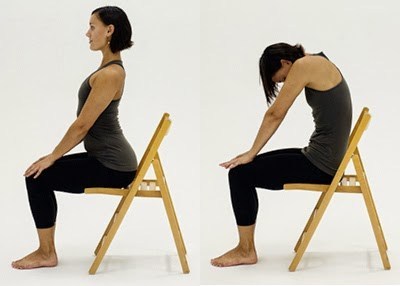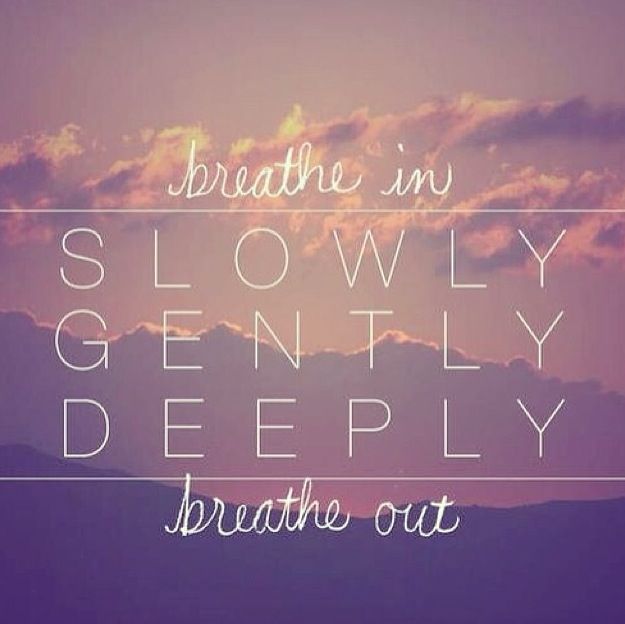
BY: JUlLIA RENAUD
June’s Community Meeting was a chair yoga workshop by BIST’s Programs and Services Coordinator, Julie Notto.
About Julie Notto
- She discovered yoga as a way to deal with chronic pain issues.
- Julie became a yoga and Pilates instructor and taught for over ten years. She was also a yoga teacher trainer.
- She has taught movement classes at many locations including at university, a wellness centre, and within the corporate sector.
What is chair yoga?
- Yoga is a physical and spiritual practice which involves using various breathing techniques, exercises, and meditation to improve overall health for the body, mind, and spirit.
- While yoga is commonly practiced using just a mat and the body, a chair can be incorporated to make it accessible for everyone!
Why practice yoga?
- Yoga is great for your overall health, including brain health. It can be relaxing, rejuvenating and wonderful for improving circulation to the brain and body. Increased circulation means more oxygen is transported to body’s organs, and more toxins get cleared out from the body, including the brain.
- Incorporating the three basic movements of flexion, extension, and rotation, yoga can be a great way to stretch sore and tired muscles and can also be challenging enough to act as a form of exercise.
- Yoga is great for brain health! It’s a modifiable and fantastic way to be active at the pace your brain and body need.
How do I start?
- Find yourself a chair; any chair will do, as long as it doesn’t have wheels! It’s best to be able to plant your feet flat on the ground while you are seated. If your feet dangle or your heels can’t quite touch the floor, get creative and find an item that can help give your feet a boost. You may try folding a yoga mat, using a step stool, or even a sturdy shoe box!
- Don’t push yourself too hard. Try one exercise and see how you feel. Check in with your body (and brain) throughout to make sure you are working at your own pace.
- Scroll down for some exercises!

Breathing techniques for yoga
- Remember that there is no right or wrong way to breathe; each breath will be different. Relax your shoulders and breathe however is comfortable for you.
- To keep your mind focused on your breath, try saying ‘in’ with each inhalation, and ‘out’ with each exhalation.
- If you’re more of a numbers person, maybe you would prefer counting breaths: inhale with the count of one, exhale with two, inhale with three to ten. When you reach ten, start again at one.
- When doing poses, try to take three complete breaths at the peak of each individual movement. If three breaths feels like too much or too few, adjust accordingly to what feels right to you.
- While breathing, feel the support of your breath, bones, and gravity.
Exercises
Give these a go to strengthen your legs, increase blood flow, improve balance, and to calm the mind and nervous system.
Strength
Chair Cat-Cow Stretch
- Sit tall on a chair with your feet flat on the floor and your hands atop your thighs or knees.
- While breathing in, arch your spine and roll your shoulders down and back. This pose is called cow.
- While breathing out, round your spine, gently dropping your head and rolling your shoulders forward. This pose is called cat.
- Ease between cat and cow at your own pace, being mindful of your breath.
Chair Downward Facing Dog Stretch

- Make sure the chair or table you are using stays sturdy throughout this pose to prevent face planting onto the floor! If using a stand-alone chair, push it against the wall before beginning. The goal is to not move the chair during this pose.
- Stand facing the chair, placing your hands atop the back rest.
- Walk your feet back until your upper body is extended, keeping a slight bend in the knee and heels on the ground.
- Lift your pelvis and feel the stretch as you extend through your spine, while breathing with intention for several breaths.
- Walk your feet back in, and roll up from the base of your spine to the top of your head.
Balance
Chair Tree Pose

- Stand with the back of the chair facing the side of your body, rooting your feet into the ground and holding on to the back of the chair with the closest hand.
- Slowly and carefully, lift the foot opposite the chair off the ground, pushing its sole into the side of the supporting leg in one of these variations:
Lower: Keep the toes of the raised foot touching the ground so your heel is roughly upper-ankle to mid-calf height.
Higher: Place the sole of your foot higher along the supporting leg, above or below the knee. Keep your knees happy by not putting your foot on the joint itself – knees aren’t made for this type of lateral pressure! Press your raised knee out to the side to open your hip and raise your free arm above your head. Breathe! Repeat on the other side.
Side Bend (Half Moon):
Image via yearofcleanwater.org
- Stand tall, with both feet together and rooted into the ground. Inhale while bringing your arms overhead and pressing your palms together.
- Shift your hips left while bending your torso and arms right to make a crescent shape with your body. Press your knees together for balance.
Hold the pose and breathe. - Repeat on the other side.
Julia Renaud is a ABI survivor with a passion for learning new things, trying new activities, and meeting new people – all of which have led her to writing this column. She is an advocate within the health care community and has been featured in the coffee table book, A Caged Mind by May Mutter, which exposes the nature of concussions through body painting.





